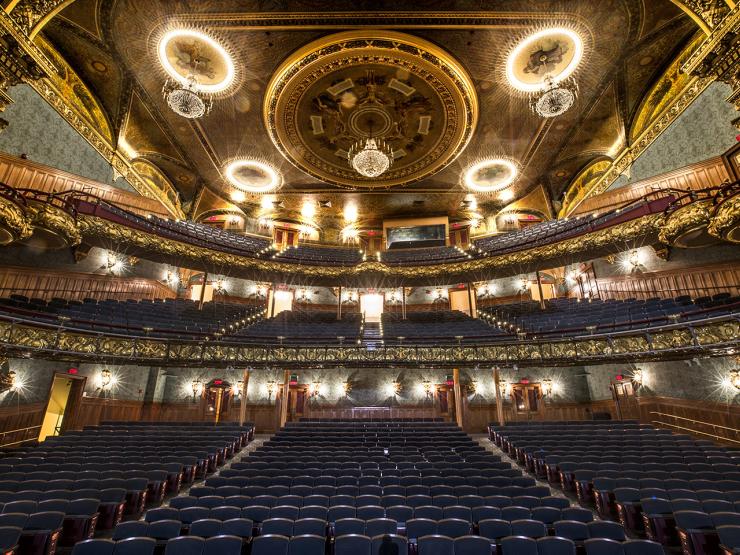History of the College
Ever since Charles Wesley Emerson founded the Boston Conservatory of Elocution, Oratory, and Dramatic Art in 1880, the College’s visionary leaders have been inspired by the highest educational aspirations. They have envisioned higher education as more than pure scholarship, but rather an immersive preparation for meeting human needs and launching brilliant artistic careers.
Renamed for its founder in 1890, Emerson College has evolved over the years as a hub of educational innovation. The College:
- Offered the first collegiate-level program in children’s theater (1919);
- Created the first course of journalism in the 1920s;
- Offered professional training in speech pathology in the ’30s;
- Developed one of the first undergraduate programs in broadcasting and broadcast journalism;
- Launched the first educational radio station in the 1940s, and later added a television station in the 1950s.
All of these innovations enrich students’ understanding of how people reach other people—teaching them about the means; the media; the creative impulses; and the institutions that communicate, inform, and inspire.
Emerson extended this philosophy to Los Angeles in 1986 with an internship-based program, and, in 2014, opened its magnificent campus in the heart of Hollywood, where students are energized by the power and history of LA’s scintillating artistic and cultural scene. Today, Emerson’s Los Angeles campus encompasses more than 100,000 square feet and houses more than two hundred students each fall and spring.
Extending Emerson’s reach worldwide began with the purchase of Kasteel Well in the Netherlands in 1988. Today, it includes Emerson-sponsored programs in Paris; Lugano, Switzerland; Washington, DC; and many other places around the world, including Spain, Mexico, Austria, and China.
Over the years, Emerson has evolved from a small New England school of oratory to a multifaceted college with an international reputation. The Emerson approach has always been compelling—you learn by doing complemented by study that deepens your understanding. The goal has remained constant: to equip students to explore the power of human communication, to pursue daring ideas, and to shape culture and society.
A Commitment to Preservation
Over the past generation and beyond, Emerson has played a major role in revitalizing downtown Boston’s famed Theatre District—thus reenergizing the cultural life of Boston and New England. In 2003, the College opened its Tufte Performance Production Center at 10 Boylston Place, an 11-story steel-and-glass building that houses Emerson’s Performing Arts Department and includes two theaters, television studios, makeup and costume labs, faculty offices, and the Huret & Spector Gallery. Also in 2003, the renovated Cutler Majestic Theatre was reopened as one of the main stages for Emerson performers and outside professional productions.
An entirely new residence hall opened in 2004. Piano Row contains residential suites, athletic facilities, offices and meeting rooms for student organizations, gathering places for off-campus students, spaces for small-group rehearsals and performances, and dining facilities.
In 2005, the school purchased the historic Paramount Theatre, restored its dazzling art deco marquee, and expanded the complex to offer stage productions on the Robert J. Orchard Stage and the Jackie Liebergott Black Box Theatre, and film screenings at the Bright Family Screening Room. Emerson community members also teach and learn at a sound stage, scene production shop, rehearsal studios, practice rooms, classrooms, and offices.
Most recently, Emerson built a beautiful new residence hall and dining hall on Boylston Place and completed the restoration of the historic Little Building residence hall. The College also restored the legendary Emerson Colonial Theatre on Boylston Street in partnership with the Ambassador Theatre Group.
In all, since the early 1990s, Emerson’s investment in high-energy student life and culture in downtown Boston has reflected its commitment to the ideals of its founders. And, happily, for generations to come, the College’s continual evolution will benefit the cultural and civic life of Boston, New England, and the nation.
